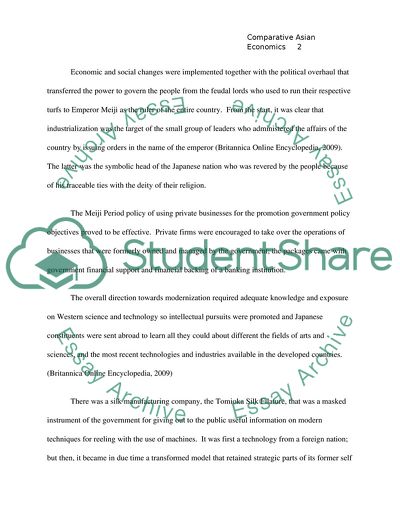Cite this document
(Comparative Asian Economics: The Meiji Period in the Japanese History Research Paper, n.d.)
Comparative Asian Economics: The Meiji Period in the Japanese History Research Paper. Retrieved from https://studentshare.org/history/1726008-comparative-asian-economicsmeiju-japan-1868-1911
Comparative Asian Economics: The Meiji Period in the Japanese History Research Paper. Retrieved from https://studentshare.org/history/1726008-comparative-asian-economicsmeiju-japan-1868-1911
(Comparative Asian Economics: The Meiji Period in the Japanese History Research Paper)
Comparative Asian Economics: The Meiji Period in the Japanese History Research Paper. https://studentshare.org/history/1726008-comparative-asian-economicsmeiju-japan-1868-1911.
Comparative Asian Economics: The Meiji Period in the Japanese History Research Paper. https://studentshare.org/history/1726008-comparative-asian-economicsmeiju-japan-1868-1911.
“Comparative Asian Economics: The Meiji Period in the Japanese History Research Paper”, n.d. https://studentshare.org/history/1726008-comparative-asian-economicsmeiju-japan-1868-1911.


